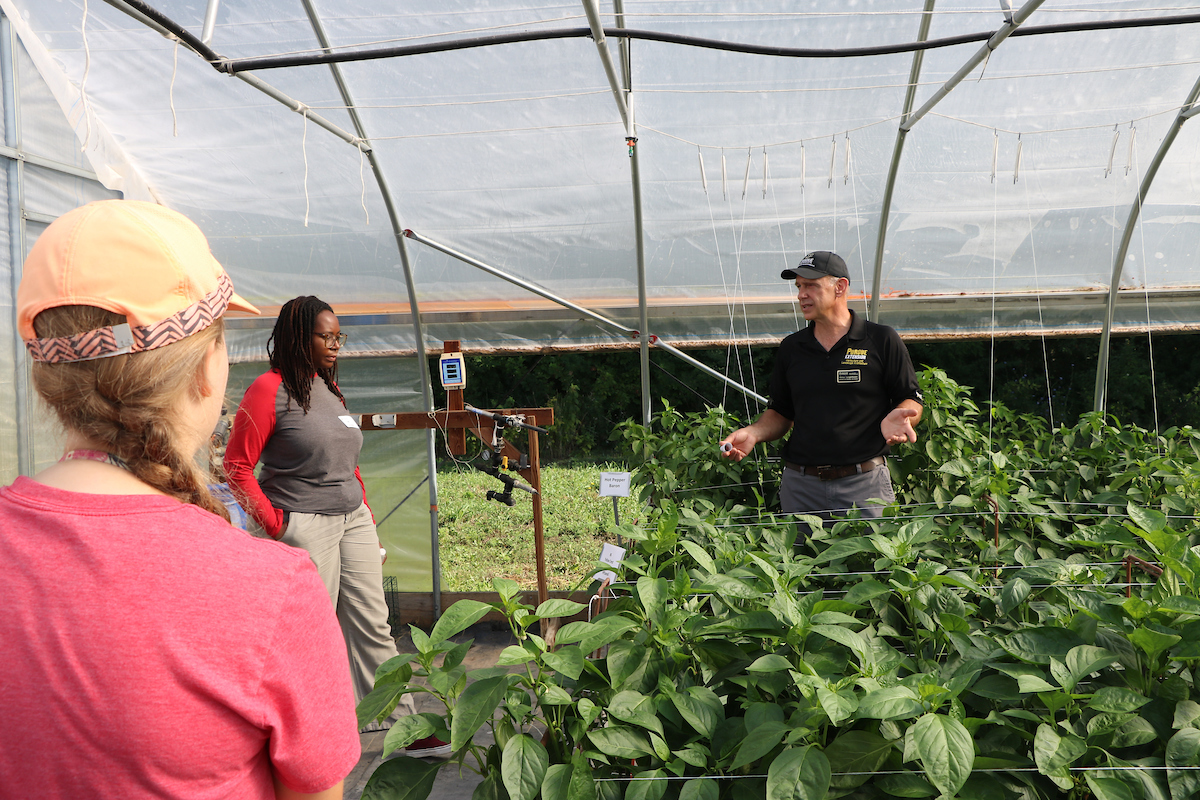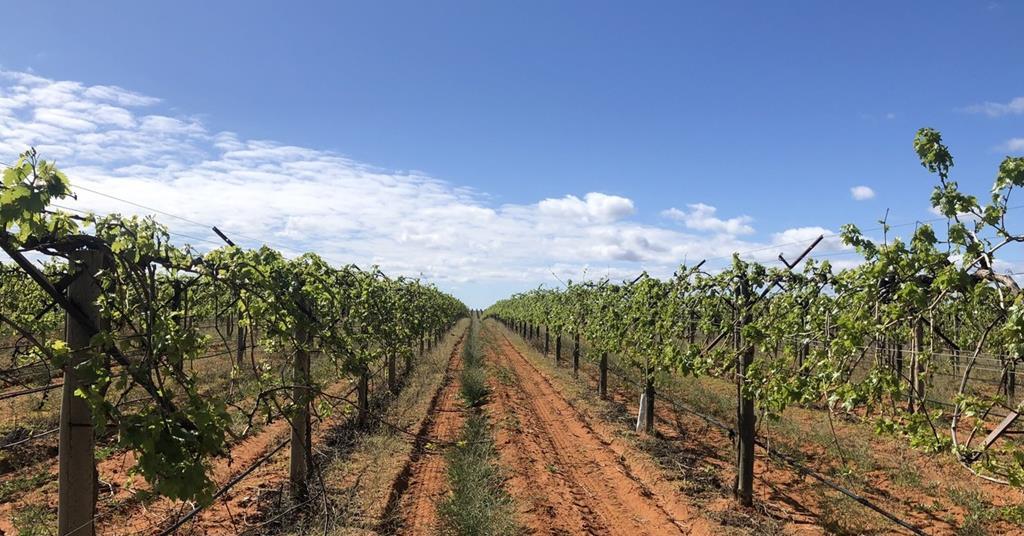Farm leaders support MAHA crop production strategies – AgriNews

Analysis of the ‘Make America Healthy Again’ Commission Report and its Alignment with Sustainable Development Goals
Executive Summary
The final strategy report from the ‘Make America Healthy Again’ (MAHA) Commission, released on September 9, has been met with encouragement from agricultural stakeholders. The report refrains from imposing new regulations on farming, instead offering recommendations that align with several United Nations Sustainable Development Goals (SDGs), particularly those concerning health, food security, and sustainable production. The collaborative process between the commission and agricultural groups is seen as a positive step towards achieving these shared objectives.
Stakeholder Perspectives on Sustainable Production and Land Stewardship
The report’s focus on sustainable agricultural practices received positive feedback, highlighting a commitment to SDG 12 (Responsible Consumption and Production) and SDG 15 (Life on Land).
- Soil Health and Conservation: The Fertilizer Institute and the Illinois Corn Growers Association commended the commission for recognizing the importance of soil health. This aligns with SDG 15 by promoting the sustainable use of terrestrial ecosystems. Practices mentioned include:
- 4R nutrient stewardship
- Use of cover crops
- No-till farming
- Precision Agriculture: The American Soybean Association and National Corn Growers Association noted the report’s prioritization of precision agriculture. These technologies support SDG 12 by enabling more efficient use of resources, reducing waste, and minimizing environmental impact.
- Regulatory Framework: Stakeholders expressed relief that the commission affirmed the Environmental Protection Agency (EPA) as the appropriate regulatory body for pesticides. A recommendation to review the EPA’s approval process aims to provide farmers with timely access to modern tools, supporting efficient and sustainable production.
Ensuring Food Security and Promoting Well-being
The commission’s strategy addresses critical components of SDG 2 (Zero Hunger) and SDG 3 (Good Health and Well-being) by balancing agricultural productivity with health outcomes.
- Food Security: The National Association of Wheat Growers emphasized that effective crop protection tools are essential for maintaining a stable and abundant food supply, a cornerstone of achieving SDG 2. The report acknowledges the need for these tools to ensure national food security.
- Health and Nutrition: While the overall report was praised, the American Soybean Association raised concerns about rhetoric surrounding the nutritional value of soybean oil. This highlights the ongoing need for science-based dialogue to ensure policies support both public health goals under SDG 3 and the livelihoods of farmers contributing to SDG 2.
Collaborative Governance and Future Outlook
The engagement process between the MAHA Commission and agricultural groups exemplifies SDG 17 (Partnerships for the Goals).
- The final report reflects a successful dialogue where the commission was accessible and incorporated feedback from farmers and industry experts.
- Agricultural associations have expressed their commitment to continue working with the administration and Congress to implement the report’s science-based recommendations, fostering a partnership approach to building a more sustainable and healthy food system.
Analysis of Sustainable Development Goals in the Article
1. Which SDGs are addressed or connected to the issues highlighted in the article?
-
SDG 2: Zero Hunger
- The article focuses on agricultural practices, food production, and food security. It discusses the importance of crop protection tools to ensure a “stable and abundant supply of wheat, a cornerstone of our nation’s food security,” which directly relates to ending hunger and ensuring access to food. The promotion of sustainable farming practices like no-till farming and improved soil health also aligns with the goal of achieving sustainable agriculture.
-
SDG 3: Good Health and Well-being
- The central theme of the article is the “Make Our Children Healthy Again” and “Make America Healthy Again” strategy. This initiative aims to improve the “overall health of the American people.” The discussion also covers the safe use of pesticides and the role of the Environmental Protection Agency (EPA) in approving chemicals, which pertains to reducing health risks from hazardous substances.
-
SDG 12: Responsible Consumption and Production
- The article highlights the promotion of “4R nutrient stewardship plans” by The Fertilizer Institute, which is a framework for the efficient and sustainable management of fertilizers. This, along with the emphasis on the EPA’s science-based process for regulating crop inputs, connects to the environmentally sound management of chemicals and the efficient use of natural resources in production.
-
SDG 15: Life on Land
- There is a significant emphasis on protecting terrestrial ecosystems through improved agricultural practices. The article repeatedly mentions “on-farm conservation practices,” “soil health,” “no-till farming,” “cover crops,” and “land stewardship.” These practices are crucial for improving soil quality, preserving natural resources, and promoting sustainable land use.
-
SDG 17: Partnerships for the Goals
- The article describes a successful collaboration between a government body (the MAHA Commission) and various private sector stakeholders (agriculture groups). Quotes like “The MAHA Commission has listened to and engaged with America’s farmers” and “We truly felt like we had a seat at the table” illustrate an effective public-private partnership in the policy-making process.
2. What specific targets under those SDGs can be identified based on the article’s content?
-
Under SDG 2 (Zero Hunger):
- Target 2.1: End hunger and ensure access by all people… to safe, nutritious and sufficient food all year round. The article supports this by discussing the need for crop protection tools to “ensure a stable and abundant supply of wheat, a cornerstone of our nation’s food security.”
- Target 2.4: Ensure sustainable food production systems and implement resilient agricultural practices that increase productivity and production… and that progressively improve land and soil quality. This is addressed through the promotion of “on-farm conservation practices,” “soil health practices like no-till,” “use of cover crops,” and “precision agriculture.”
-
Under SDG 3 (Good Health and Well-being):
- Target 3.9: Substantially reduce the number of deaths and illnesses from hazardous chemicals and air, water and soil pollution and contamination. The article’s focus on the EPA’s “robust, science-based pesticide approval process” and the recommendation for a “review of EPA’s chemical approval process” directly relate to managing and minimizing health risks associated with agricultural chemicals.
-
Under SDG 12 (Responsible Consumption and Production):
- Target 12.2: Achieve the sustainable management and efficient use of natural resources. This is reflected in the promotion of “4R nutrient stewardship plans” and “precision agriculture,” both of which aim to use resources like fertilizers and other inputs more efficiently.
- Target 12.4: Achieve the environmentally sound management of chemicals… to minimize their adverse impacts on human health and the environment. The reliance on the EPA as the “appropriate agency for regulating crop inputs” and ensuring a “science-based” approval process for pesticides aligns with this target.
-
Under SDG 15 (Life on Land):
- Target 15.3: Combat desertification, restore degraded land and soil… and strive to achieve a land degradation-neutral world. The article’s strong emphasis on making “soil health a larger part of the public dialogue” and the promotion of practices like “no-till farming” and “cover crops” are direct actions toward improving land and soil quality.
-
Under SDG 17 (Partnerships for the Goals):
- Target 17.17: Encourage and promote effective public, public-private and civil society partnerships. The article provides a clear example of this target in action, detailing how the MAHA Commission “listened to and engaged with America’s farmers,” leading to a final strategy that was viewed favorably by agricultural groups.
3. Are there any indicators mentioned or implied in the article that can be used to measure progress towards the identified targets?
-
For Target 2.4 (Sustainable Agriculture):
- Implied Indicator: The rate of adoption of sustainable farming practices. The article mentions the promotion of “expanded farmer adoption of 4R nutrient stewardship plans” and the use of “cover crops and no-till farming.” Measuring the percentage of farmland utilizing these methods would serve as an indicator of progress.
- Implied Indicator: The accessibility and use of precision agriculture tools. The article notes that the strategy proposes “policies to expand access to these tools,” suggesting that tracking the expansion and adoption of this technology is a key metric.
-
For Target 3.9 / 12.4 (Chemical Management):
- Implied Indicator: Efficiency and timeliness of the chemical review process. The recommendation for a “review of EPA’s chemical approval process to prioritize timely reviews” implies that the time taken for these reviews and the number of modern products approved could be used as indicators of an effective regulatory system.
-
For Target 15.3 (Land/Soil Health):
- Implied Indicator: The area of agricultural land managed under soil health-improving practices. The focus on “on-farm conservation practices” and “soil health” suggests that progress can be measured by the total acreage where practices like no-till and cover cropping are implemented.
-
For Target 17.17 (Partnerships):
- Implied Indicator: Level of stakeholder engagement and satisfaction in policy development. The positive feedback from agricultural groups, such as feeling they “had a seat at the table” and that the “process has worked as it should,” serves as a qualitative indicator of a successful and effective partnership between government and industry.
4. Table of SDGs, Targets, and Indicators
| SDGs | Targets | Indicators (Mentioned or Implied in the Article) |
|---|---|---|
| SDG 2: Zero Hunger |
2.1: Ensure access to safe, nutritious and sufficient food.
2.4: Ensure sustainable food production systems and implement resilient agricultural practices. |
– Stability of the national food supply (e.g., wheat).
– Rate of farmer adoption of 4R nutrient stewardship plans. |
| SDG 3: Good Health and Well-being | 3.9: Substantially reduce illnesses from hazardous chemicals and pollution. | – Timeliness and thoroughness of the EPA’s chemical approval process. |
| SDG 12: Responsible Consumption and Production |
12.2: Achieve sustainable management and efficient use of natural resources.
12.4: Achieve environmentally sound management of chemicals. |
– Implementation of efficient resource management plans (e.g., 4R nutrient stewardship).
– Adherence to science-based regulatory processes for crop inputs (e.g., EPA pesticide approval). |
| SDG 15: Life on Land | 15.3: Combat desertification, restore degraded land and soil. | – Area of agricultural land managed with practices that improve soil health (e.g., no-till, cover crops). |
| SDG 17: Partnerships for the Goals | 17.17: Encourage and promote effective public-private partnerships. | – Qualitative measure of stakeholder satisfaction and engagement in the policy-making process. |
Source: agrinews-pubs.com

What is Your Reaction?
 Like
0
Like
0
 Dislike
0
Dislike
0
 Love
0
Love
0
 Funny
0
Funny
0
 Angry
0
Angry
0
 Sad
0
Sad
0
 Wow
0
Wow
0



















































.jpg.webp?itok=0ZsAnae9#)

























